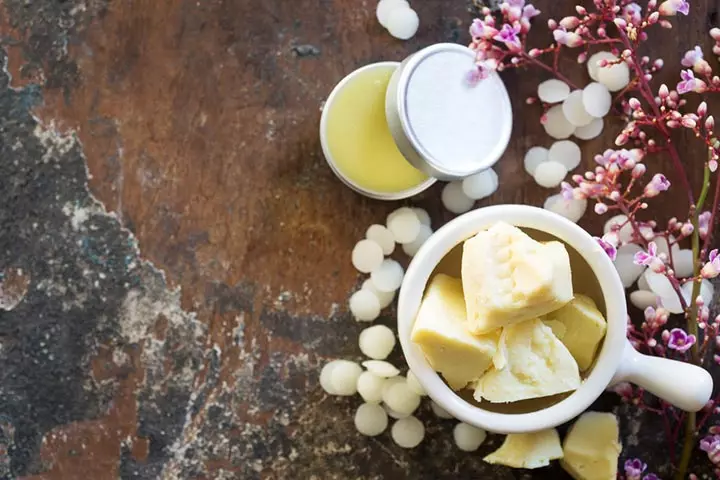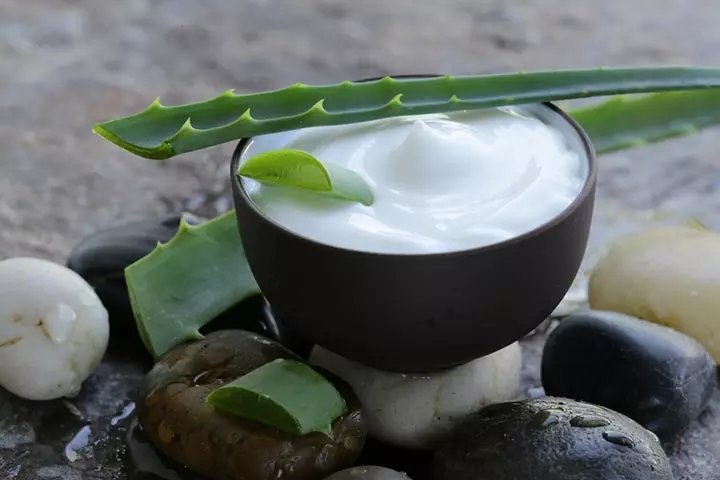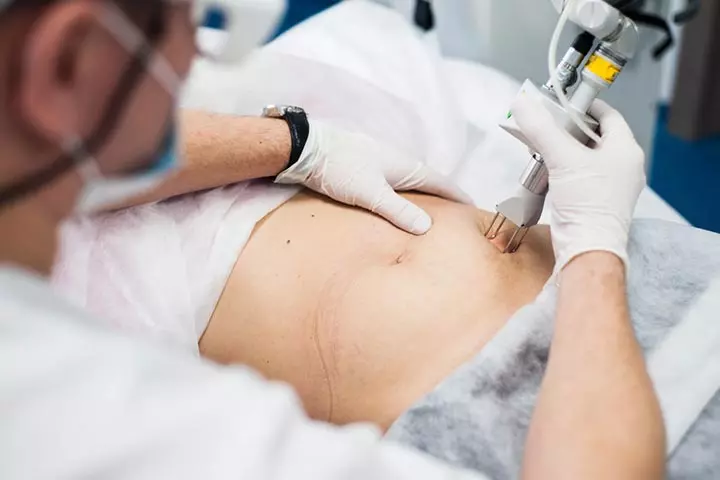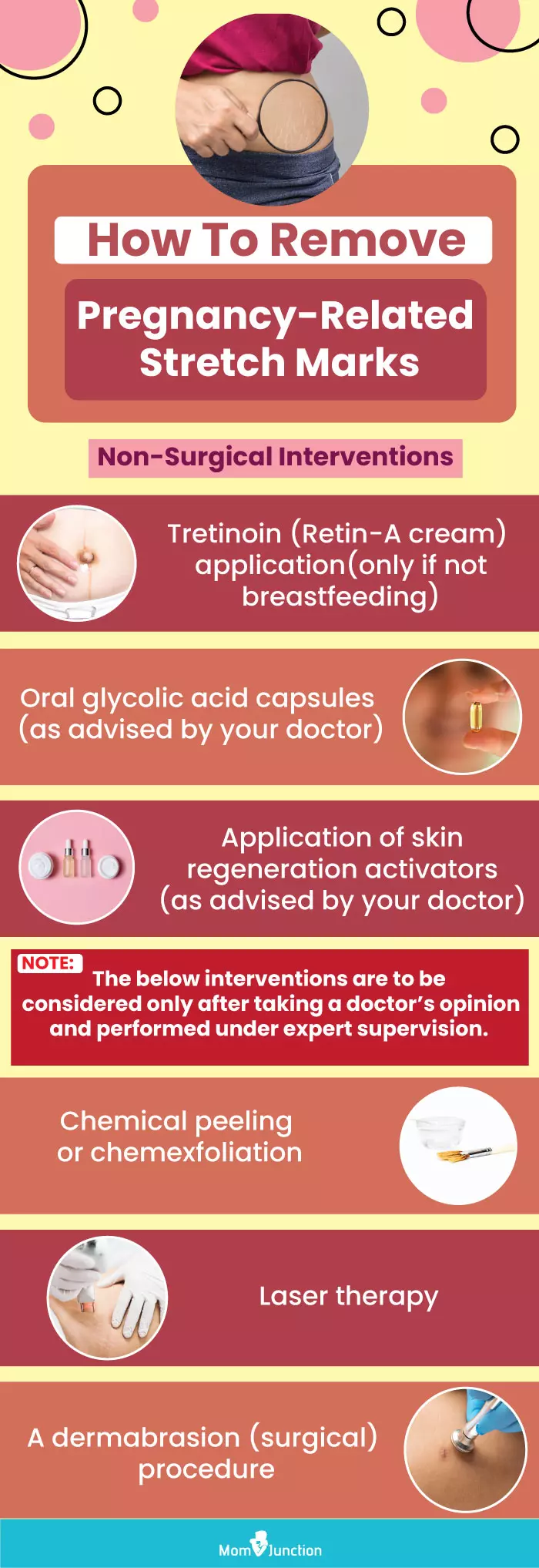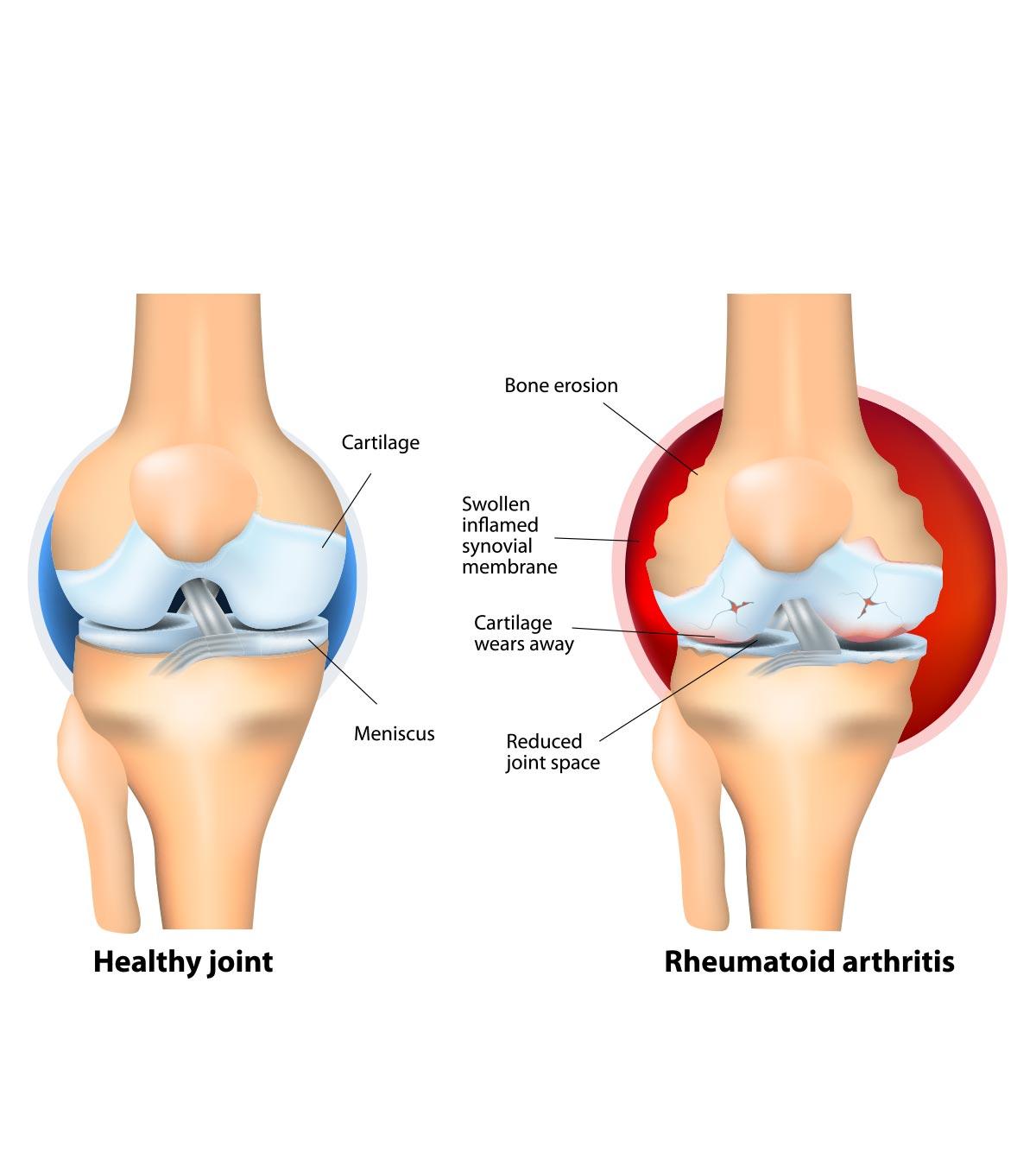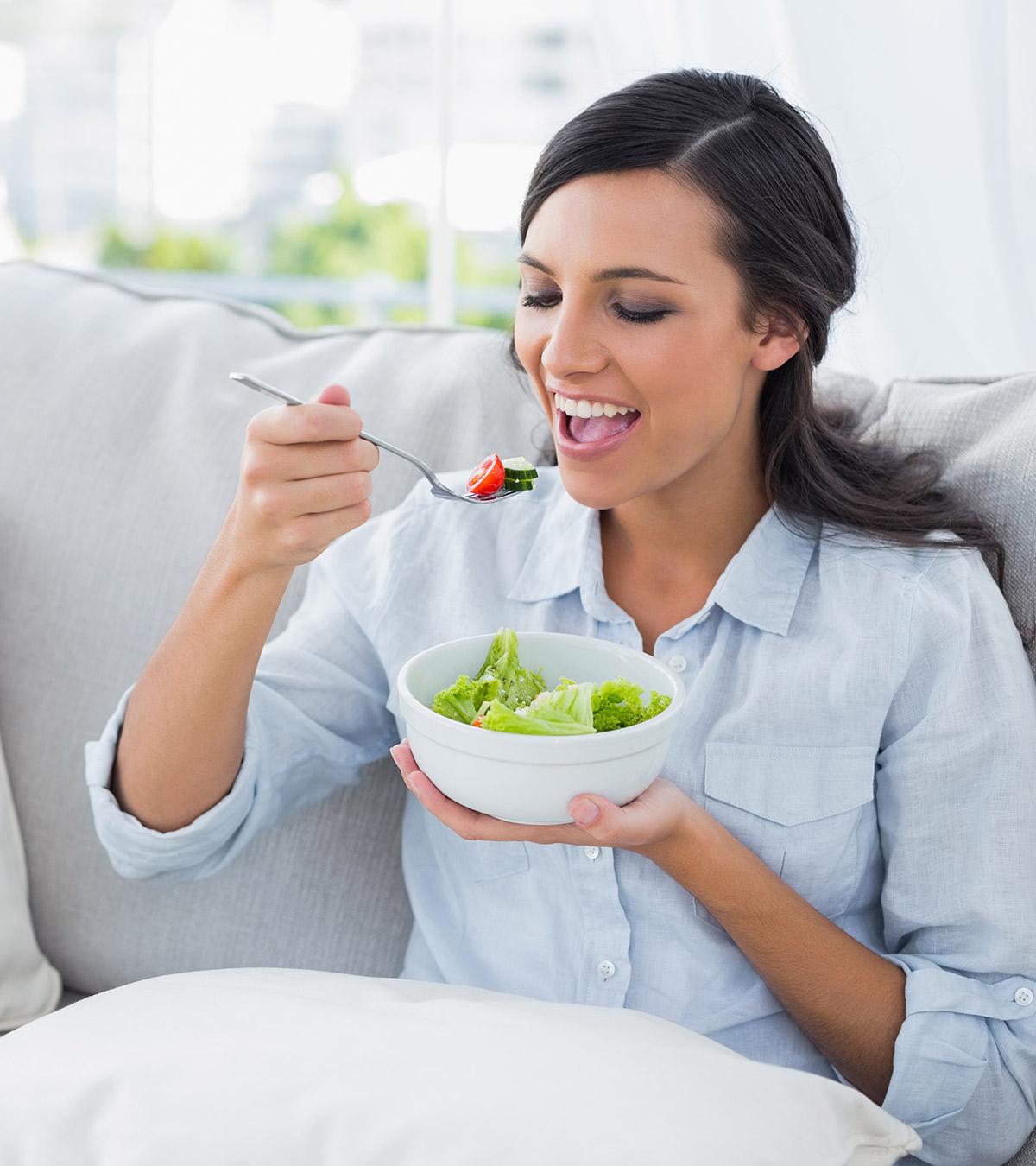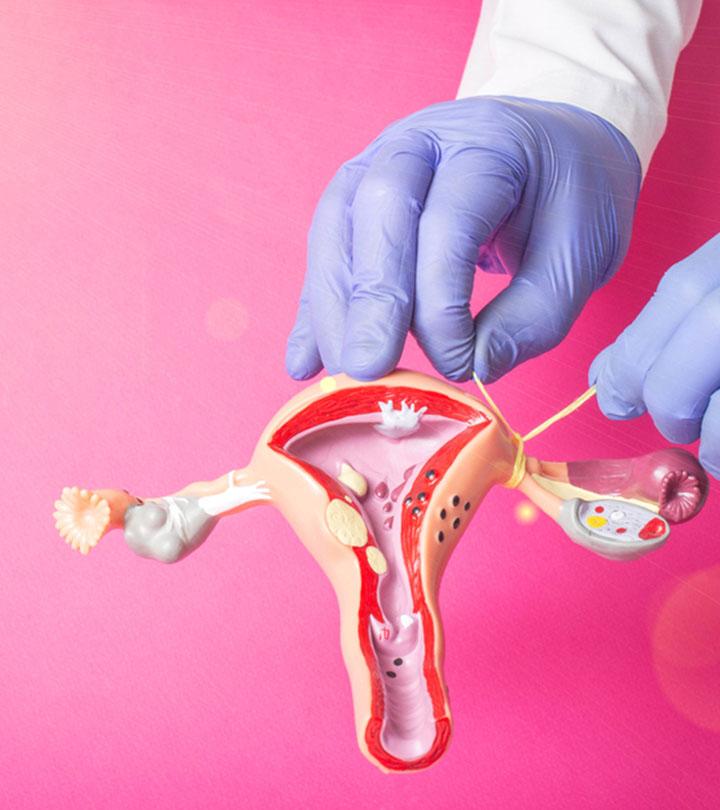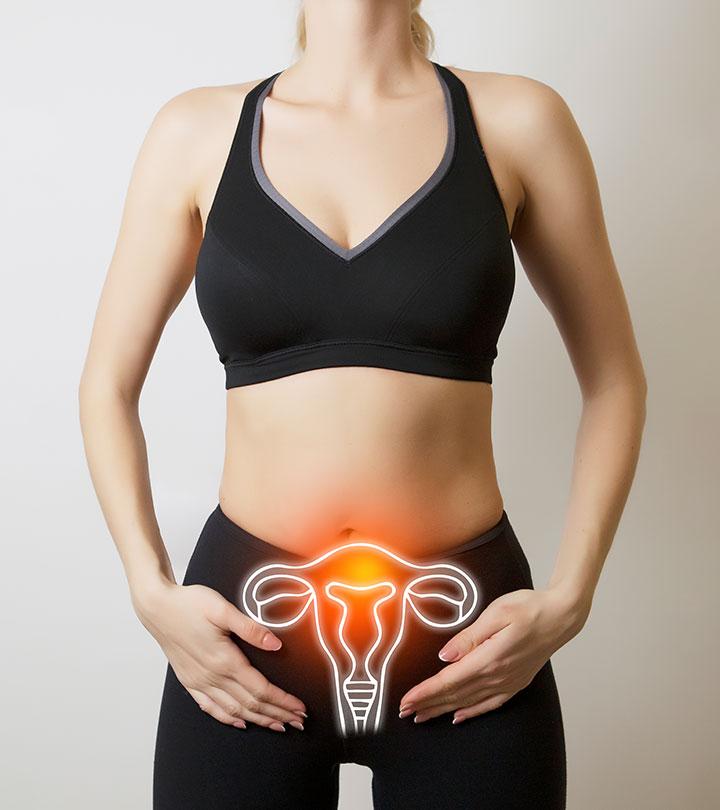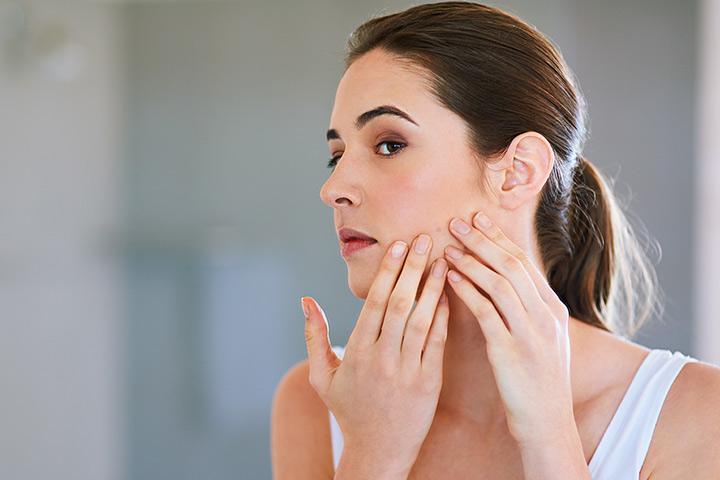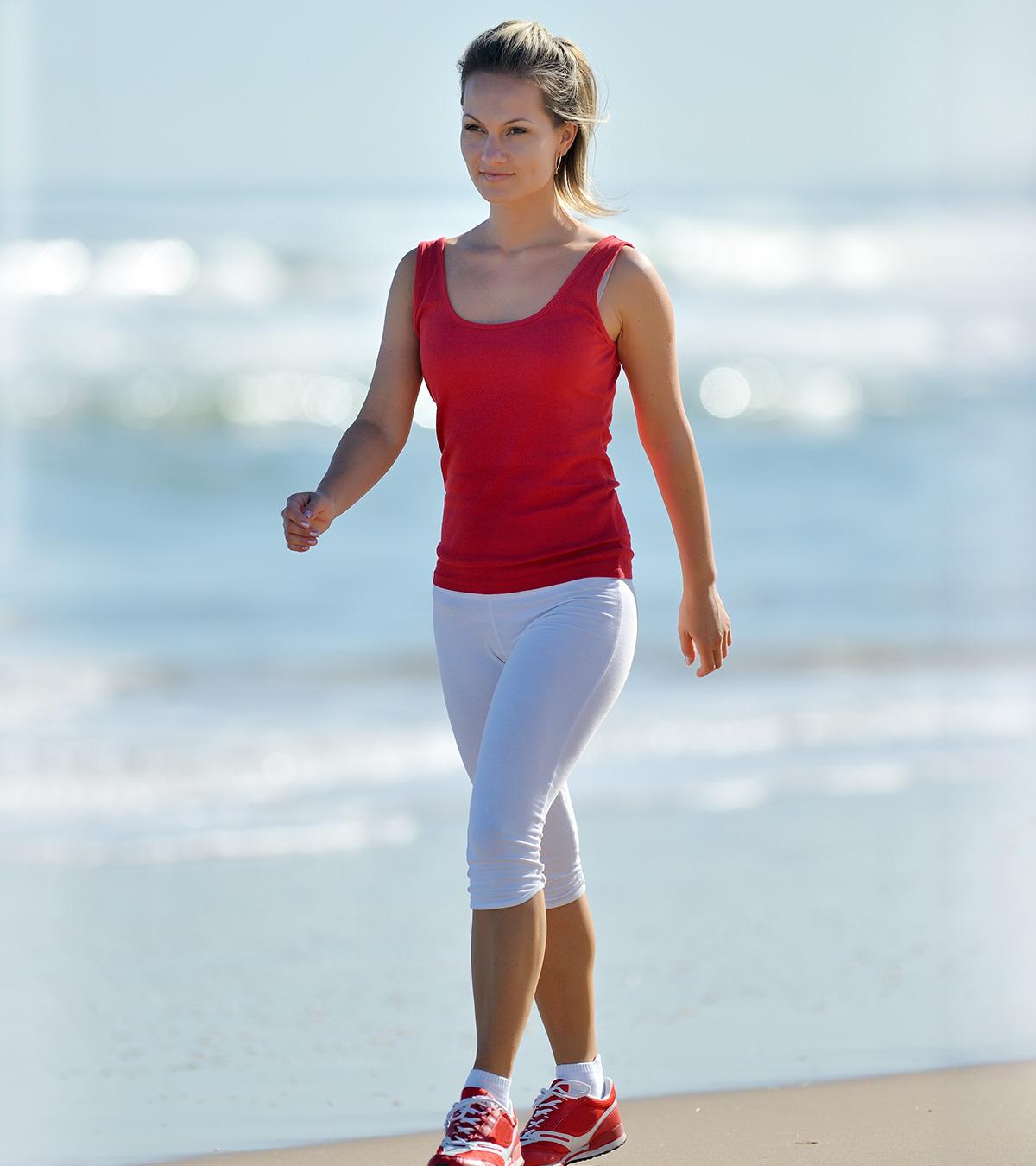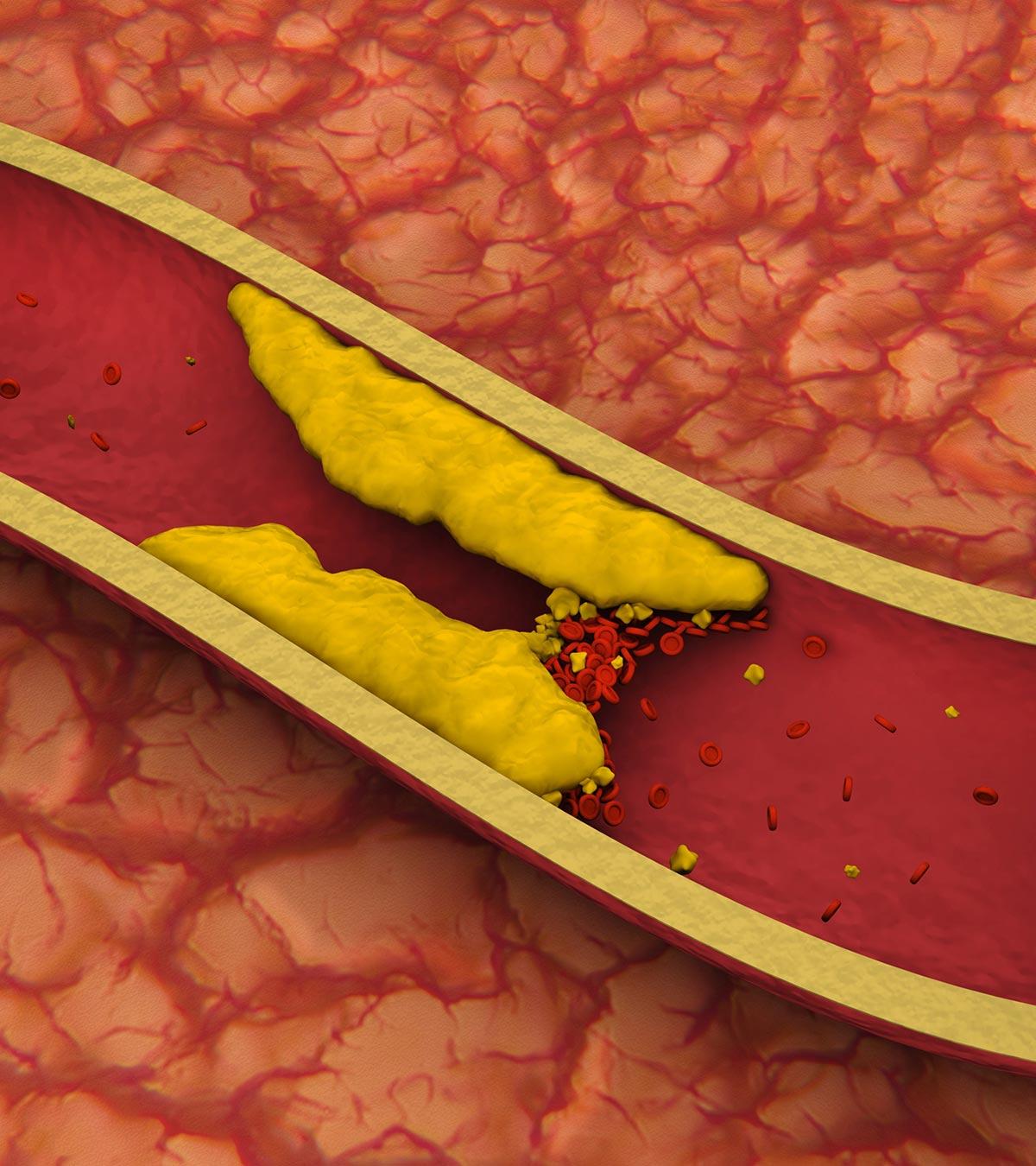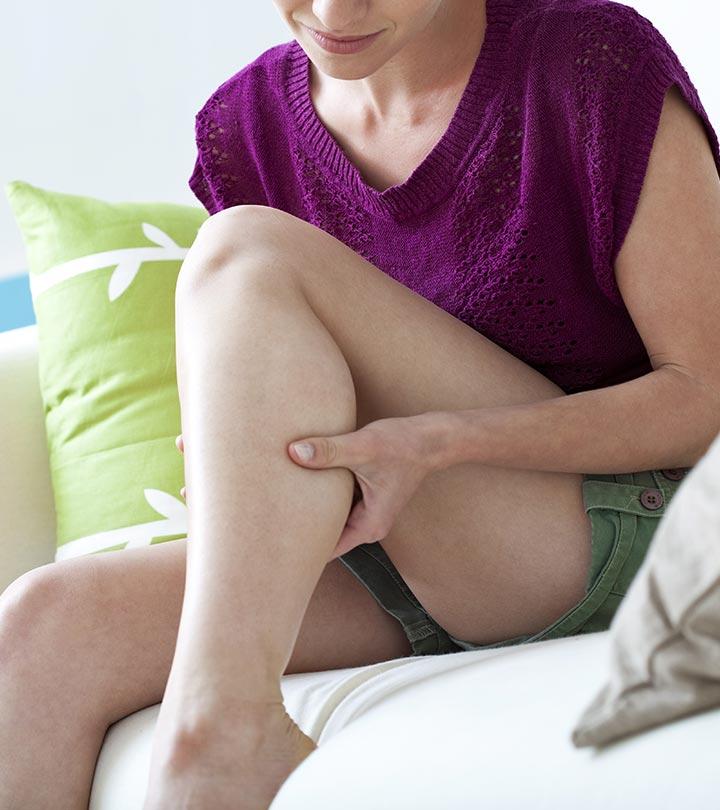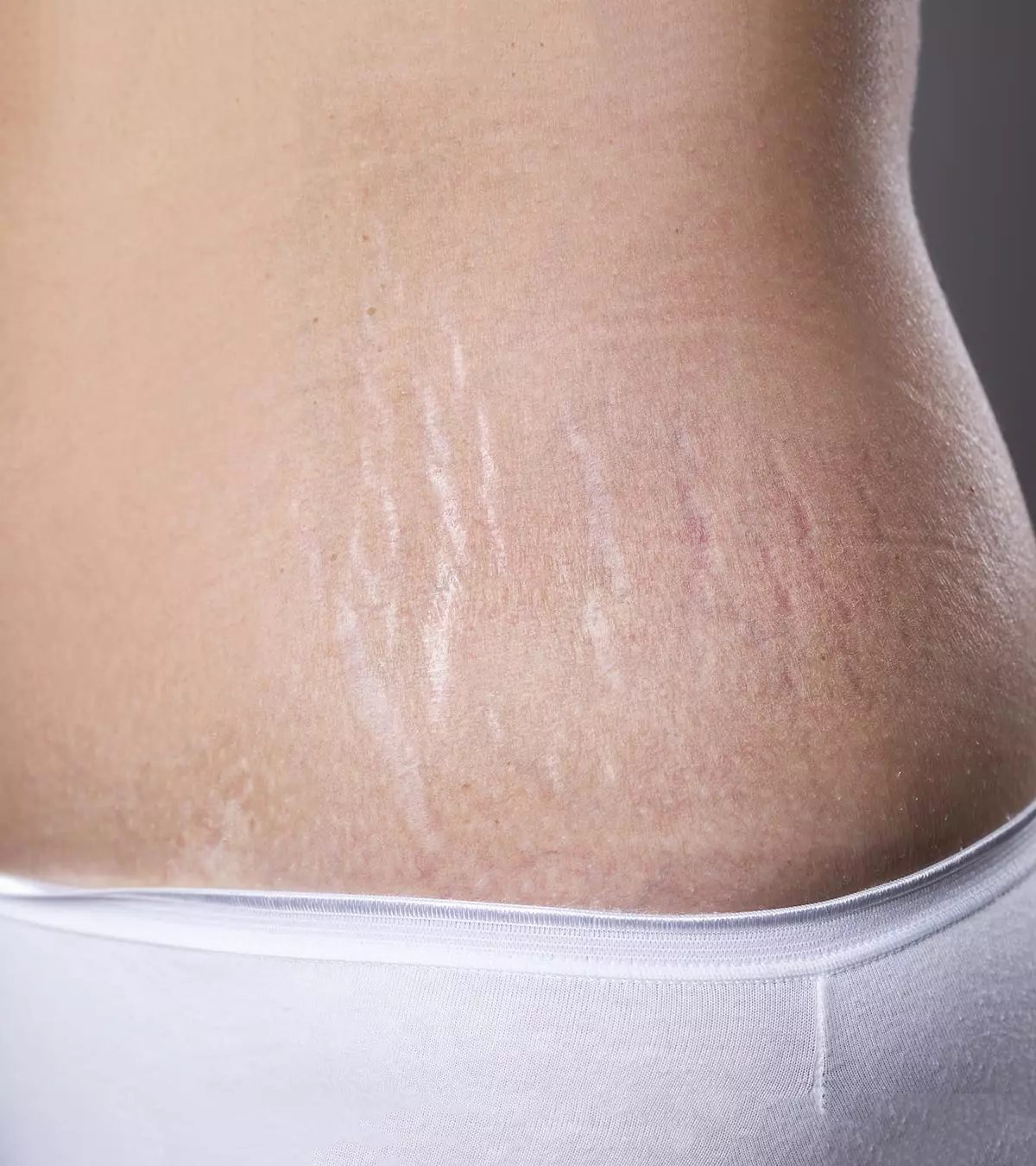
Stretch marks after pregnancy are common since the skin is stretched during pregnancy. New moms may notice pregnancy stretch marks or striae gravidarum on the abdomen, breasts, hips, thighs, and arms. Every mother’s body changes after childbirth. It may be hormonal changes or sudden weight fluctuations, which can cause the skin to stretch and leave marks. These skin changes leave marks that can be purple or reddish and gradually turn white or gray. Most women get stretch marks during the sixth or seventh month of gestation.
Read on to learn about some home remedies and medical treatments for stretch marks after pregnancy.
Is It Possible To Get Rid Of Stretch Marks?
Stretch marks eventually get lighter with time but will never disappear completely. Though you may not get rid of them in a natural way, certain remedies might help in minimizing their appearance. You may consider some massaging creams, lotions, and oils that may turn your skin smooth and supple, but after consulting your doctor.
Over the months and maybe years, the marks gradually turn into fine lines which are almost closer to your skin tone. Though you may have to bear the natural ‘battle scars’, they become less visible in three to six months after delivery, write Janet Arenson and Patricia Drake in their book Quick Look Nursing: Maternal and Newborn Health.
Home Remedies To Remove Pregnancy Stretch Marks
There are certain effective home remedies you can try to reduce the appearance of postpartum stretch marks. Most of these remedies are from The Big Book Of Home Remedies, written by Samuel Billings (1).
1. Oil Treatment
Massaging the affected areas with oils make your skin smooth and help reduce the stretch marks. Some of the popularly used oils include:
Olive Oil: Olive oil moisturizes and exfoliates your skin. It also improves the blood circulation and removes stretch marks to a great extent (2).
- Take some oil in your palms and gently massage the area.
- Let it remain for 30 minutes so that the vitamins A, D and E in the oil are absorbed into the skin.
- Take a bath after the massage.
- Though it is a time-taking process, it gives you results when you follow it regularly.
- Or you can also prepare a mixture of olive oil, water and vinegar (or lemon juice), and apply at night.
Vitamin E Oil
- Extract the oil from vitamin E capsule.
- Mix with any moisturizer you use regularly and apply on the stretch marks.
- On regular usage, it gives effective results by fading off the marks.
Castor Oil
- Apply castor oil on the stretch marks and massage the area gently in circular motion for about five to ten minutes.
- Use a plastic bag to cover the area, roll a hot water bottle on it for about 30 to 40 minutes. The heat opens the pores and the oil gets absorbed into the pores.
- Clean the area and repeat it every day for at least a month to see good results.
Other Oils:
Various oils like sesame, coconut, almond, avocado, castor and vitamin E can be mixed in equal proportions and applied on the skin. You can also use them to massage the region.
Essential Oil Treatment
- Take regular oils like almond, sesame, or coconut.
- Add a few drops of essential oils like rose, geranium, lavender, myrrh or helichrysum.
- Use this mixture to massage on the stretch marks for at least 30 minutes. It will help reduce the stretch marks quickly.
2. Aloe Vera
Aloe vera promotes healing and soothes your skin. Use fresh gel rather than the one available in the market.
- Rub it directly over the skin, leave for 15 minutes and wash it off using lukewarm water. Apply on the affected areas regularly.
- You can also prepare a mixture of one-fourth cup of aloe vera gel with oil from five vitamin A and ten vitamin E capsules. Rub it over the skin until it is completely absorbed. Apply it twice a day.
3. Honey
The antiseptic property of honey works in reducing stretch marks.
- Take a small cloth and apply honey on it.
- Place the cloth on the affected area and let it remain until it turns dry.
- Rinse off using warm water.
- Or you can prepare honey scrub by mixing it with salt and glycerin. Apply it on the stretch marks, leave until it dries and rinse off using water.
4. Egg White
Egg white is rich in protein, which helps rejuvenate the skin and makes it look fresh.
- Beat two egg whites using a fork.
- Clean the affected area with water and apply a thick layer of egg white using a makeup brush.
- Let it dry and then rinse off using cold water.
- Apply some olive oil to keep the skin supple and moisturized.
- Repeat it every day for at least two weeks. It helps improve your skin tone, and the marks fade away slowly.
5. Shea Butter Or Cocoa Butter
Shea or cocoa butter can be used just like oil treatment. They are also the primary ingredients present in most of the body lotions.
Take some shea or cocoa butter and apply on the stretch marks regularly. Rinse off the area after some time.
This remedy improves the skin elasticity, prevents dryness, reduces the stretch marks and adds moisturization to the skin. Cocoa butter is an excellent moisturizer and helps nourish your skin.
6. Sugar
Sugar is one of the best remedies for stretch marks. It exfoliates your dead skin, and your stretch marks turn lighter.
- Take one tablespoon of sugar, mix with some almond oil and a few drops of lemon juice.
- Use it as a scrub before you go for a shower.
- Do this every day for a month.
7. Lemon Juice
The acidic property of lemon juice works in healing stretch marks.
- Rub fresh lemon juice on the affected area.
- Leave it for about 10 minutes so that the juice soaks into your skin.
- Rinse off using warm water.
- Apply every day for better results.
- You can also make a mixture of lemon and cucumber juice in equal proportions and apply it to the stretch marks.
8. Water
The skin should be well-hydrated to erase the stretch marks and other skin conditions. Consume at least 10 to 12 glasses of water every day to keep your skin hydrated and protected from toxins. It keeps your skin supple and restores its elasticity. Try avoiding tea, coffee and soda as they are dehydrating agents.
9. Apricot
- Deseed the fruit and cut it into small pieces.
- Crush the fruit in a blender to make a paste.
- Apply on the stretch marks, and leave for 15 to 20 minutes.
- Rinse off with lukewarm water and repeat regularly.
10. Potato Juice
Potato contains phytochemicalsiBioactive compounds found in plant-based foods that act as antioxidants and have antimicrobial effects. , polyphenolsiA group of chemical substances, such as phenolic acids, flavonoids, and lignane, that act as antioxidants. , and carotenoidsiPigments found in plants that get converted into vitamin A within the intestine. , which improve the skin texture.
- Cut a potato into two halves and rub one-half over the stretch marks.
- Allow the juice to soak into the skin and let it dry.
- Then rinse off the area using lukewarm water.
- You can notice the difference in a few months.
- Or you can use potato juice or pulp.
11. Turmeric And Sandalwood
They are known for their ability to promote brighter and even skin texture.
- Prepare one spoon of sandalwood paste by rubbing the sandalwood stick in a bit of water.
- Prepare a smooth paste of fresh turmeric root.
- Mix both in equal proportions and apply on the skin.
- Leave until it dries almost to 60% and then scrub your skin until all of it comes off.
- Repeat every day for at least six months to see the improvement.
12. Milk, Sugar And Green Coconut Water
Scrubs are effective in boosting the skin regeneration process, and they are one of the best ways to remove postnatal stretch marks.
- Mix two spoons of raw milk, a few drops of lemon juice and cucumber juice, half a spoon of sugar.
- Apply on the stretch marks and scrub for around five minutes in a circular motion.
- Rinse off with water and pat the area dry.
- Apply coconut water in excess and allow it to dry until you can sense the stretch on the skin.
- Then apply shea butter or aloe vera gel.
- After some time, rinse off the area and then apply moisturizer.
- You can use this remedy three times a week to help remove marks and lighten the skin.
- Repeat not more than 3 times a week.
13. Alfalfa
Alfalfa leaves are a great source of protein, essential amino acids, and vitamins E and K. Their antifungal property detoxifies the skin and helps heal stretch marks.
- Prepare a smooth paste by mixing the powder with a few drops of chamomile oil.
- Massage it all over the stretch marks.
- Apply two to three times a day and you can notice stretch marks fading away within a week.
- Alfalfa powder is available in food stores.
14. Home-Made Moisturizer
Moisturizer helps improve skin elasticity. You should choose it depending on your skin type. If your skin is dry, you should use the one with cocoa butter, and if your skin is oily, use cream that contains aloe vera or a clay moisturizer.
- Mix olive oil, aloe vera gel, and wheat germ oil in equal proportions.
- You can use it as a moisturizer if you have a dry or combination skin type.
- The above mixture can be mixed with clay if your skin is an oily type.
15. Home-Made Lotion
- Take a quarter cup of aloe vera gel and a half cup of extra virgin olive oil.
- Extract oil from six vitamin E capsules and three to four vitamin A capsules.
- Mix all these ingredients, take them in a glass bottle, and store them in the refrigerator.
- The natural stretch marks removal lotion can be applied every day.
16. Home-Made Cream
- Mix half a cup of cocoa butter, one tablespoon of vitamin E oil, and two tablespoons of grated beeswax.
- You may add apricot kernel oil and wheat germ oil as well.
- Bring the mixture to boil until the wax gets melted.
- Store it in a bottle and refrigerate it.
- You can use it every day.
Exercise To Fight Pregnancy Stretch Marks
Exercises that work on the muscles of the areas with stretch marks help reduce the marks. They tone the skin and help regenerate the tissues. Exercise can help tighten belly skin after pregnancy along with other loosened skin and helps diminish stretch marks. A combination of exercises and a balanced diet helps you feel better, and you can see for yourself the stretch marks before and after vary.
Stacia Priscilla, a mother and a poet, shares her secret to preventing stretch marks. She explains, “What helped me manage morning sickness, mood swings, and overall stress was hitting the gym once a week throughout my first pregnancy. This is because getting your heart rate up improves circulation and increases blood cell count, a win-win for both you and your baby. That glow you get when you break a sweat comes from extra oxygen and nutrients delivered to the skin, which enhances its ability to produce collagen, thereby keeping the unsightly grooves at bay (i).”
Contrast Showers And Swimming
They have a significant effect on the skin. They improve the blood circulation in the subcutaneousiRelated to the fatty tissues beneath the skin. tissues (3) and enhance skin elasticity. All you need to do is alternate your shower between hot and cold water for micro-circulation.
Medical Treatments To Remove Stretch Marks After Pregnancy
Doctors suggest that natural remedies are far better than medical treatments, especially if you are breastfeeding. But if you are too tired of the pregnancy stretch marks to try home remedies, here are the treatment options. These have to be done under strict guidance and supervision of a qualified dermatologist. However, some of them could pose serious complications.
1. Chemical Peels
Chemical peels, also referred to as derma peeling or chemexfoliation, use a chemical solution on the stretch marks (4). The solution contains chemicals like trichloroacetic, glycolic, lactic, salicylic, or carbolic acids, which when applied on the stretch marks result in blister formation. The blistered skin is later peeled off for the formation of a new skin layer.
This treatment also has risks including, a color change of the skin, abnormal skin pigmentation if you have a history of brown discoloration or if you are on birth control pills, scarring, and cold sores (in herpes patients).
2. Laser Therapy
Laser therapy is a common and proven treatment for stretch marks removal. It works for scar reduction on both older, deeper marks as well as newer marks. It involves removing, vaporizing and breaking down affected skin tissues to enhance new cell production. The two costly options are pulsed-dye laser and fractional non-ablative laser therapies, both of which remove the stretch marks and improve skin’s texture, writes the Oprah Magazine. It results in permanent stretch marks removal. But it is costly.
Market research shows a rising trend in the stretch marks treatment market, focusing on three treatment modalities: topical products, laser therapy, and microdermabrasion. Topical products have the largest market share and are expected to continue growing due to reasonable pricing and easy availability. On the other hand, the market size for laser therapy and microdermabrasion is smaller, likely due to their higher cost. Still, their market share is also growing significantly (11).
Stretch marks treatment market in North America
Source: Grand View Research3. Glycolic Acid
The alpha hydroxy acid has peeling properties. It restores collagen production in the skin, increasing its elasticity, and therefore making the stretch marks less visible (5). Glycolic acid capsules are available in drug stores, but you should consult your doctor before taking them.
4. Tretinoin Cream
Your dermatologist may prescribe tretinoin cream, also known as Retin-A, if you are not breastfeeding. It can be used alone or by mixing with other creams.
A study shows that applying 0.1% tretinoin cream can reduce stretch marks (6). It is noticed that the stretch mark length is reduced by 14% and width by 8%. Another study reveals that the length is reduced by 20%. However, there is not much evidence of its absorption into the breastmilk. Hence, it is good to avoid when breastfeeding or planning a pregnancy.
5. Skin Regeneration Activators
You can get good quality and result oriented creams for stretch marks removal. They primarily smoothen the skin, blend the pigmentation and gradually remove the red or silvery appearance on the skin. Most of the products include cocoa butter and vitamin E oil along with some other organic ingredients.
 Quick fact
Quick factA good anti-stretch marks cream contains any of these following ingredients:
Retinol: Every anti-stretch retinoid cream helps in hydrating the skin and regenerating the skin tissues.
Collagen and elastin: These are proteins that improve skin elasticity and regeneration.
Jojoba oil and shea butter: These are both found in good anti-stretch or cellulite creams. They improve blood circulation in your skin.
Vitamins and amino acids: These are prerequisites for rapid skin regeneration.
Essential oils: They improve the total metabolic weight in the skin and increase its elasticity.
They are cost effective, convenient to use and easy to get. However, these marketed products are not safe to use in the lactating stage, and can cause discoloration of the skin.
 Quick fact
Quick fact6. Microdermabrasion
Microdermabrasion is a minimally invasive facial resurfacing technique that gently exfoliates the uppermost skin layer, promoting the development of new skin. It is commonly used to treat conditions such as uneven skin tone/texture, acne scars, photoagingiEarly aging of the skin from sun exposure. , and stretch marks (7).
According to the American Society of Plastic Surgeons, microdermabrasion lessens the appearance of stretch marks (8). However, it doesn’t get rid of them (9). Besides, the procedure is generally not recommended for lactating women as increased hormone levels during this period may interfere with the treatment’s effects and affect the skin.
7. Surgery
Surgery is not recommended for stretch marks removal. The surgical procedure (dermabrasion) involves removal of layers of skin, which have the stretch marks so that it regenerates. It results in incision scars that are worse than stretch marks. It also has several risks involved.
Frequently Asked Questions
1. What is the fastest way to get rid of stretch marks?
Minimizing stretch marks takes time and cannot be done in a short period. For a quick fix, use makeup to temporarily conceal the stretch marks that are visible while wearing your outfit.
2. What vitamins can help reduce stretch marks?
Collagen helps maintain the tautness of the skin and may help prevent stretch marks. Vitamins C and E and other minerals help form collagen. Vitamins B2 (Riboflavin) and B3 (Niacin) are also helpful in maintaining skin health (10).
3. How can I prevent stretch marks after pregnancy?
Healthy weight gain, gradual weight loss, a balanced diet, ample hydration, sufficient vitamins, and treatment of fresh stretch marks as soon as they appear can help prevent permanent stretch marks.
4. Why am I getting more stretch marks after pregnancy?
During pregnancy, your skin stretches due to weight gain. However, after childbirth, the body returns to its pre-pregnancy state, which causes the skin to stretch further, increasing the appearance of stretch marks.
5. Does Bio Oil, Mederma, and Vaseline remove or get rid of stretch marks?
Topical products, such as Bio oil, Mederma, and Vaseline may help lighten the appearance of stretch marks and improve skin texture. However, no clinical evidence exists to validate their efficacy in completely removing stretch marks.
6. Does coconut oil help with stretch marks?
According to Florida-based physician Dr. Matthew Casavant, “Coconut oil is a natural moisturizer that might help reduce the appearance of stretch marks. It will not eliminate stretch marks but may help soften and fade them over time. The lauric acid in coconut oil has natural anti-inflammatory properties. Massaging coconut oil into stretch marks, especially when they are still red or pink, may increase blood flow to the area and speed up the fading process.”
Stretch marks after pregnancy may develop on various parts of the body such as the abdominal region, breasts, and thighs. They generally occur due to hormonal and weight changes. Although these marks do not disappear completely, they may become lighter with time. Using oil, aloe vera, honey, shea butter, and other home remedies may help prevent skin dryness and lighten the marks. Medical treatments, such as chemical peels, laser therapy, and glycolic acid, also effectively treat stretch marks. However, if the marks do not disappear completely even after several trials, remember to embrace them as a mark of your pregnancy.
Infographic: Medical Treatments To Remove Stretch Marks After Pregnancy
Stretch marks are common among most pregnant women. Although they may be inevitable, several advanced techniques and treatment modalities exist to eliminate stretch marks postpartum. This infographic lists a few treatment options; nonetheless, speak to your doctor before considering one for removing these marks. Illustration: Momjunction Design Team
Key Pointers
- To prevent stretch marks, use a good quality moisturizer recommended by a dermatologist.
- Regular exercise can help reduce the appearance of stretch marks by toning and tightening loosened skin, and regenerating tissues.
- Applying natural remedies such as oils, honey, cocoa butter, and lemon juice can help lighten stretch marks.
- Medical treatments like chemical peels, laser therapy, and microdermabrasion can improve skin elasticity and promote cell regeneration, reducing the appearance of stretch marks.
Personal Experience: Source
MomJunction articles include first-hand experiences to provide you with better insights through real-life narratives. Here are the sources of personal accounts referenced in this article.
i. How I Completely Avoided Stretch Marks;https://medium.com/the-motherload/how-i-completely-avoided-stretch-marks-6e368e76ccfa
References
- The Big Book of Home Remedies.
https://books.google.co.in/books?id=T_45BgAAQBAJ&lpg=PT229&dq=The%20Big%20Book%20Of%20Home%20Remedies%2C%20written%20by%20Samuel%20Billings&pg=PT229#v=snippet&q=stretch%20marks&f=false - Bogusław Antoszewski et. al.; (2015); Self-assessment of striae gravidarum prophylaxis.
https://www.ncbi.nlm.nih.gov/pmc/articles/PMC4697027/ - A Mooventhan and L Nivethitha; (2014); Scientific Evidence-Based Effects of Hydrotherapy on Various Systems of the Body.
https://www.ncbi.nlm.nih.gov/pmc/articles/PMC4049052/ - Chemical Peels.
https://my.clevelandclinic.org/health/treatments/11010-chemical-peels - You Jin Yang and Ga-Young Lee; (2011); Treatment of Striae Distensae with Nonablative Fractional Laser versus Ablative CO2 Fractional Laser: A Randomized Controlled Trial.
https://www.ncbi.nlm.nih.gov/pmc/articles/PMC3229942/ - S Kang et. al.; (1996); Topical tretinoin (retinoic acid) improves early stretch marks.
https://pubmed.ncbi.nlm.nih.gov/8624148/ - Microdermabrasion.
https://www.ncbi.nlm.nih.gov/books/NBK535383/ - Microdermabrasion.
https://www.plasticsurgery.org/cosmetic-procedures/microdermabrasion - Stretch Marks: Why They Appear And How To Get Rid Of Them.
https://www.aad.org/public/cosmetic/scars-stretch-marks/stretch-marks-why-appear - What Can Be Done To Prevent Stretch Marks?
https://americanpregnancy.org/healthy-pregnancy/pregnancy-concerns/prevent-pregnancy-stretchmarks/ - Stretch Marks Treatment Market Size Share & Trends Analysis Report By Treatment (Topical Products Laser Microdermabrasion) By Region And Segment Forecasts 2019 – 2026.
https://www.grandviewresearch.com/industry-analysis/stretch-marks-treatment-market - Stretch marks in pregnancy
https://www.nhs.uk/pregnancy/related-conditions/common-symptoms/stretch-marks/
Community Experiences
Join the conversation and become a part of our nurturing community! Share your stories, experiences, and insights to connect with fellow parents.
Read full bio of Dr. Girija Wagh
- Dr. Matthew Casavant is the founding physician of South Lake OB/GYN & Advanced Surgery. He received his medical degree from Nova Southeastern University in South Florida and completed his residency as an Ob/Gyn at St. Vincent’s /Mercy Hospital in Toledo, OH. Dr. Casavant also holds a BS degree in Micro and Molecular Biology.
 Dr. Matthew Casavant is the founding physician of South Lake OB/GYN & Advanced Surgery. He received his medical degree from Nova Southeastern University in South Florida and completed his residency as an Ob/Gyn at St. Vincent’s /Mercy Hospital in Toledo, OH. Dr. Casavant also holds a BS degree in Micro and Molecular Biology.
Dr. Matthew Casavant is the founding physician of South Lake OB/GYN & Advanced Surgery. He received his medical degree from Nova Southeastern University in South Florida and completed his residency as an Ob/Gyn at St. Vincent’s /Mercy Hospital in Toledo, OH. Dr. Casavant also holds a BS degree in Micro and Molecular Biology.
Read full bio of Rebecca Malachi
Read full bio of Swati Patwal
Read full bio of Dr. Joyani Das







